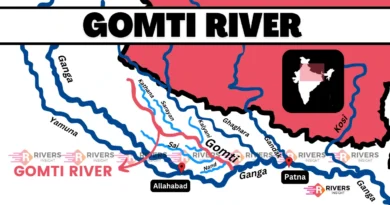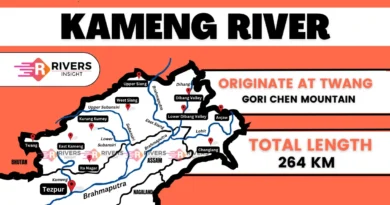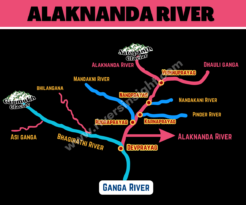Antecedent Rivers of India: Meaning & Examples
What is an Antecedent River?
An antecedent river is a river that maintains its original course despite tectonic uplift or the rise of mountain ranges. In other words, the river existed before the mountains formed and continues to cut through them, forming deep gorges or valleys.
This is a unique geological phenomenon and one of the key indicators of active landscape evolution.
Antecedent River Meaning
The term antecedent river refers to rivers that:
- Predate the current landforms
- Flow across rising mountain systems
- Cut through ridges instead of being diverted
These rivers hold scientific importance in understanding tectonic activity and geomorphology.
How Antecedent Rivers Are Formed?
- Initial Flat Terrain: The flow begins across a relatively flat and stable landscape.
- Tectonic Uplift: Then, tectonic forces cause the land beneath to rise (mountain-building occurs).
- Erosion: The watercourse continues to erode downward as the land elevates, maintaining its original path.
- Formation of Gorges or Valleys: Then, as erosion progresses, deep gorges or valleys are created, allowing the flow to remain uninterrupted.
This process is slow and takes millions of years, but it reveals much about the Earth’s tectonic evolution.
Example: Brahmaputra River
A well-known example of an antecedent river is the Brahmaputra. Originating in Tibet as the Yarlung Tsangpo, it flows eastward and then turns south to enter Arunachal Pradesh in India. Along its course, it cuts across the rising Himalayan ranges, forming deep gorges, especially in the Arunachal region.
This shows that the river existed before the Himalayas fully formed, and it maintained its original course despite the uplift of the mountains, making it a classic antecedent river.
Key Characteristics
- The river formed before the uplift of the land
- Cuts across mountains and ridges
- Creates valleys or gorges
- Shows strong vertical erosion
- Indicates ongoing geological uplift
Antecedent River Example
Antecedent Rivers of India
Here are some prominent examples of antecedent rivers in India:
- Indus River
- Brahmaputra River
- Sutlej River
- Teesta River
- Kali Gandaki River
Global Examples
- Colorado River (USA) – Carved the Grand Canyon
- Yellow River (China) – Crosses structural barriers on the Loess Plateau
Is Ganga an Antecedent River?
No, the Ganga River is not an antecedent river. Although it originates from the Himalayas, it flows along a depression formed after the uplift of the Himalayas. It does not cut across major mountain ranges, which is a defining trait of antecedent rivers.
Is Yamuna an Antecedent River?
The Yamuna River is also not classified as an antecedent river. It follows a course influenced by existing topography and fault lines but does not erode across rising ranges. Therefore, it doesn’t meet the criteria of an antecedent river.
Conclusion
An antecedent river is a geological wonder that offers insights into Earth’s tectonic history. These rivers, from the Indus and Sutlej to the Brahmaputra, show how nature carves its path, regardless of obstacles.




